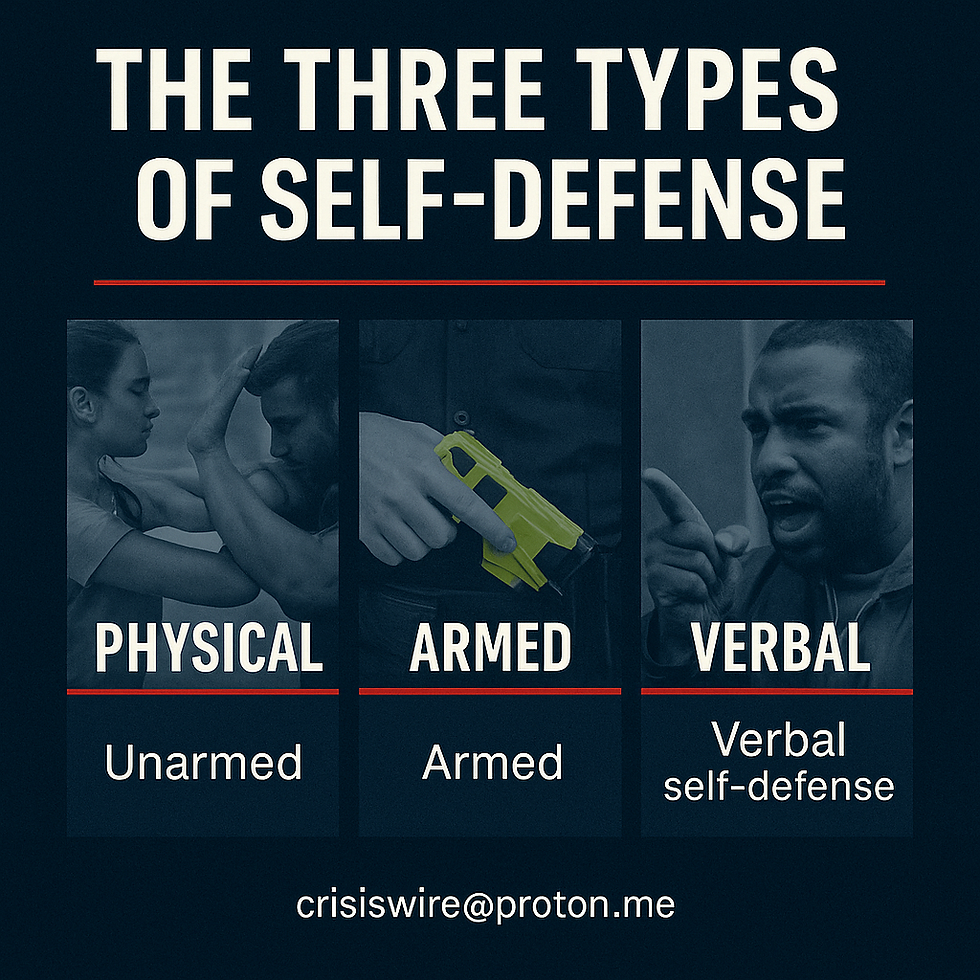Campus Under Siege — Why Universities Are Soft Targets and What Must Change
- CrisisWire

- Oct 3
- 3 min read
The Threat to Higher Education
On campuses across America, universities aspire to be safe havens of learning — yet many are among the softest security targets in existence. In Campus Under Siege: Why Universities Are Soft Targets — and How to Fix Them, Warren Pulley pulls back the curtain on systemic vulnerabilities, explores real-world scenarios, and offers prescriptions for transforming campus safety.
As with all of CrisisWire’s work, this book is more than commentary — it’s a call to arms. From my experience in USAF, LAPD, DHS/FEMA certification, and protective contracting (WPPS/WPS), I’ve seen how institutions that ignore threat reality are vulnerable to the worst outcomes.
2. Deep Analysis: Core Themes & Frameworks
2.1 Universities as Soft Targets
Pulley argues that the very openness of universities — open campuses, mixed populations, decentralized authority — works against their security posture. Attackers often see them as low-resistance, high-impact venues.
2.2 Threat Vectors & Scenarios
He explores key threat vectors:
Active attacks (mass violence)
Insider threats (students, staff, contractors)
Campus protests, radicalization, and ideological escalation
Infrastructure sabotage or cyber-physical convergence
2.3 Prevention & Weakness Exposure
Pulley’s framework shows how small gaps — lack of coordination, inconsistent threat assessment, minimal training — allow vulnerabilities to persist and escalate.
2.4 Solutions & Roadmap
The book doesn’t merely identify problems — it offers implementation strategies:
Unified threat assessment teams
Integrated security + academic governance
Transparency & communications protocols
Regular training and scenario planning
3. Case Studies & Evidence
Pulley includes stories and events from campuses that suffered catastrophes due to failures in planning or execution. He also references incidents where effective preparedness mitigated risks.
These case studies reinforce one core truth: preparation is tactical, but resilience is institutional.

4. How This Book Fits Into the CrisisWire Ecosystem
Brand alignment: Campus Under Siege dovetails with your campus safety pillar and is a prime candidate to be cross-linked from your anchor guide.
Content spawn: Each chapter can become its own blog post — e.g. “Insider Threats on Campus”, “Protests & Radicalization in Higher Ed”, “Designing Unified Campus Safety Teams.”
Training utility: Use the book as core curriculum in security workshops you offer to colleges/universities.
Lead magnet angle: Offer a preview or chapter excerpt as PDF to your audience, driving signups for more content or consulting.
5. Actionable Takeaways for Campus Leaders & Security Directors
Treat a university like a city inside a campus — it needs governance, security, and command structure.
Build integrated threat assessment teams combining security, academic, student affairs, and mental health.
Standardize reporting and escalation protocols (what behavior gets flagged, who responds).
Conduct tabletop exercises and drills that simulate attacks, protests, or insider threats.
Enhance physical infrastructure smartly (access control, surveillance, patrol routing) but don’t over-rely on tech.
Prepare for reputation & crisis communications — attack events often expose leadership failings more than security technicalities.
6. Leadership Liability & Institutional Responsibility
Pulley’s thesis includes this key warning: when a disaster strikes, boards, presidents, and deans are held accountable — not just campus police. Universities that don’t embed security into their institutional mission expose themselves to legal, reputational, and financial fallout.
7. Resource Backlinks You Can Use
CrisisWire Blog Hub
Anchor Guide: The CrisisWire 2025 Threat Assessment & Security Leadership Guide
Academia.edu / Archive.org / Scribd resources on threat assessment, campus safety, continuity
Federal sources: FEMA, CISA
Related internal posts: School Threat Assessments, Workplace Violence Prevention, Insider Threats
Get your copy of Campus Under Siege to understand the vulnerabilities and potential fixes for higher education institutions. Then, partner with CrisisWire to audit your campus, build unified safety strategies, and transform threat culture into prepared resilience.
#CampusSafety #UniversitySecurity #ThreatAssessment #HigherEd #CrisisWire #PreparedLeader #SoftTargets #InstitutionalRisk #CollegeSecurity
10. FAQ
Q: Why are universities especially vulnerable compared to schools? Universities have open access, large populations, multiple access points, and often decentralized control — all of which increase their exposure.
Q: Can new security tech alone fix campus vulnerabilities? No. Technology helps, but without governance, training, and consistent processes, vulnerabilities remain.
Q: Does Campus Under Siege offer budget-conscious solutions? Yes — Pulley emphasizes process, protocol, and culture alongside technology — many improvements require better leadership, not just gear.
Q: For whom is this book most useful? Campus presidents, security leadership, student affairs directors, facility managers, and consultants in institutional safety.article (in the locked style), then schedule a LinkedIn post draft for it.





Comments